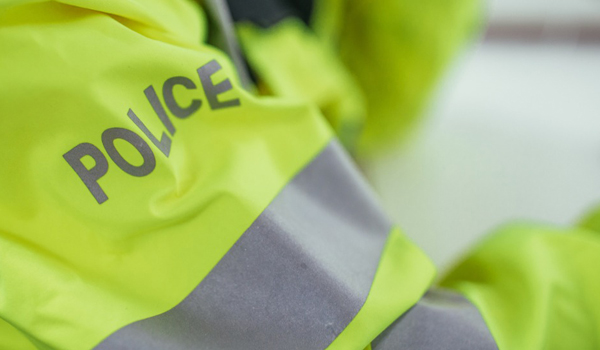HMICFRS raises concerns about Suffolk Constabulary’s response to the public
Suffolk Constabulary needs to improve how it responds to the public and protects vulnerable victims, the police inspectorate has said.
His Majesty’s Inspectorate of Constabulary and Fire and Rescue Services (HMICFRS) graded Suffolk Constabulary’s performance across nine areas of policing and found the constabulary was good in three areas, adequate in three areas and requires improvement in two areas, but inadequate at responding to the public.
While the force was praised for its recording of data about crime, police powers and treating the public fairly and respectfully, and preventing and deterring crime and anti-social behaviour and reducing vulnerability, improvements were needed in disrupting serious organised crime and protecting vulnerable people and managing offenders and suspects.
HMICFRS said the constabulary works well with communities – including those that are seldom-heard – to gather information to set and address local priorities.
It also said the constabulary has improved its ability to achieve well-supervised, better-quality investigations.
However, the inspectorate said the constabulary needs to improve its response to the public, particularly the time it takes to answer emergency and non-emergency calls.
It also said that Suffolk Constabulary must ensure processes are in place to safeguard victims effectively.
His Majesty’s Inspector of Constabulary Roy Wilsher said: “I am pleased with some aspects of the performance of Suffolk Constabulary in keeping people safe, reducing crime and providing victims with an effective service.
“However, there are areas in which it needs to improve. I have concerns about how the constabulary is responding to the public and have been in contact with the chief constable as I do not underestimate how much improvement is needed.
“The constabulary had a change in leadership in the six months leading up to our inspection, and it’s clear that the new team has a clear objective, focusing on workforce culture, behaviour and standards.
“I am pleased with the way the constabulary has responded to my concerns, and I will be monitoring progress closely.”
Suffolk Constabulary has emphasised its determination to improve how it responds to calls from the public after the latest PEEL (Police Effectiveness, Efficiency and Legitimacy) report was published.
Concerns were raised about the time it takes Suffolk’s control room to answer calls. At that time these particularly related to the 101 non-emergency number.
Over the past 12 months, the force said it has embarked on a long-term transformation project for its control room.
This includes recruiting additional call-takers, opening more online channels for people to report crime and for non-emergency issues, and the phasing in of the Right Care, Right Person initiative.
Chief Constable Rachel Kearton said: “Overall, the PEEL report reflects well on many areas of the constabulary, particularly given the increasing pressure on demand we have experienced over the past three years.
“However, we acknowledge improvements need to be made in some other areas, particularly regarding the issues we have in responding to that steep growth in demand in our control room.
“We have been clear since our last report that there is no quick fix to these issues. Although it will take time, we are committed to moving as quickly as possible to resolve them.
“I am grateful for the public’s continued support as we endeavour to do this, as well as for the hard work of our dedicated control room staff.
“There are a number of initiatives being progressed to alleviate the pressures our call takers face.
“While acknowledging there is work to be done, I am pleased Suffolk was graded as good in three areas, and as adequate in three others. Other areas such as protecting vulnerable people, and managing offenders and suspects will obviously be a focus for us.
“I assure our communities we will strive to do the best we can to continue to provide a police service they can be proud of.”
Suffolk police and crime commissioner Tim Passmore said: “Overall this is a good report, and I would like to thank all officers and staff for their continued commitment to keeping us all safe.
“Suffolk is a one of the lowest funded forces and provides good value for money to the people of Suffolk. I am pleased the Inspector recognises this in the report.
“There are many areas of notable practice, including good judgements for preventing crime, recording crime, use of police powers and treating the public fairly and respectfully and for how it disrupts serious and organised crime.
“I am disappointed that the report does not fully reflect the work, and significant investment into the control room, to improve how the force answers calls for service.
“In the last 18 months alone, we have increased staffing levels in the control room by 27 call-takers and four police officers, which is a significant increase and is already making a difference.
“The number of 999 calls into the control room has increased by over 30 per cent in the past three years. Given the significant rise, the call handling performance shown in the report in comparison to other forces in pleasing.
“For non-emergency calls, HMICFRS highlights the abandonment rate but neglects to put this in context. Calls receive initial triage to check for vulnerability. Frequently, these are not calls about crime but to support people with health and care needs where callers require specialist support.
“In response to this and to enable people to get the correct professional support, we introduced the Right Care Right Person approach. This may in time reduce pressure on our control room.
“There is work to be done but plans are in place and money has been allocated. I am confident will see improvements.”
The HMICFRS also referenced its PEEL report in August last year in which Suffolk was graded as ‘good’ for disrupting serious and organised crime.


